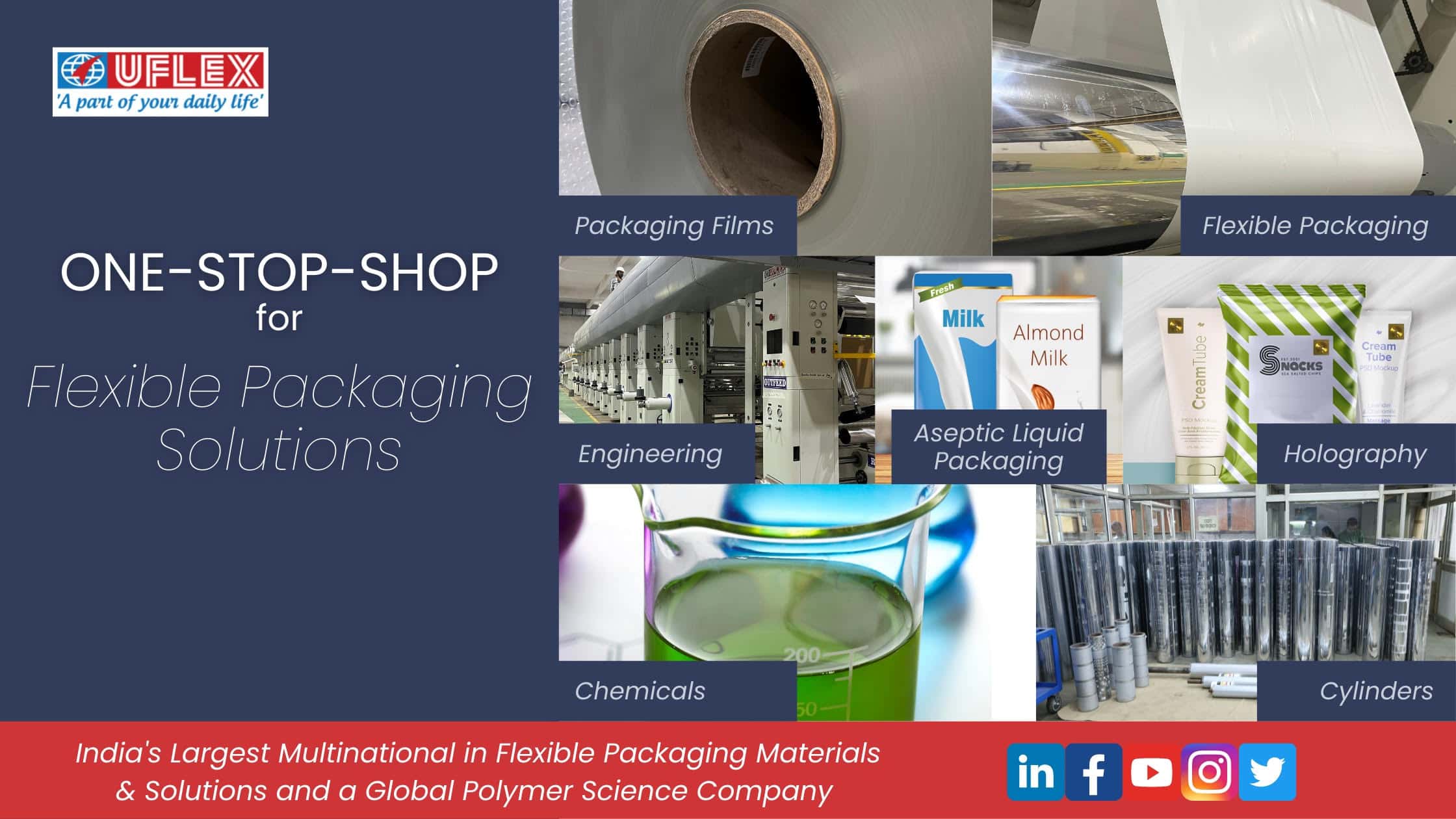Temperature variations in packed food can result in compromising its safety and quality. Driven by rapid advancements in time-temperature indicators (TTI), intelligent packaging is anticipated to witness a strong growth. This system could be able to detect food contamination and change of color incase the food is not fit for consumption by the consumer.
One of the most important points of consideration for the manufacturer of flexible packaging for the F&B have to take into is the consumer safety, health and hygiene. All data right from procurement, in-site manufacturing and supply chain are extremely important to be monitored and Coding and marking-barcodes/RFID and AIDC are helpful tools in this direction.
UFlex Ltd has been offering food packaging solutions for more than two decades now. The company offers packaging materials for food products made out if BOPET (Biaxially Oriented Polytthylene Terapthalate), BOPP (Biaxially Oriented Polypropylene) and CPP (Cast Polypropylene) films. The manufacturing of these products are in strict adherence to the international standards and norms. Flexible Packaging at UFlex is known for excellent chemical resistance, strength, protection against moisture and odour and dimensional stability.
Sustainability:
Flexible Packaging greatly reduces landfill discards. Innovation and technology have enabled flexible packaging manufacturers to use fewer natural resources in the creation of their packaging, and improvements in production processes have reduced water and energy consumption, greenhouse gas emissions and volatile organic compounds.
Flexible Packaging is gaining market share from other packaging formats such as rigid packaging. This growth is projected to continue because flexible packaging, particularly pouch packaging, uses less energy and materials and has lower transport costs, environmental impact due to less carbon footprint than its rigid counterparts.
Key Issues of the Industry:
• In tougher economic times, pressure is on packaging. Undoubtedly keeping costs low is key in many areas, but other market drivers also create opportunities for new formats and innovation and knowing these is key to developing and offering further value, helping counter some of the economic pressures.
• While the industry believes cost is key, the consensus is that impulse and convenience driven categories (such as confectionery and prepared meals) offer the greatest opportunities. The industry needs to effectively target these areas to combat the relentless focus on costs elsewhere.
• Issues in Vacuum Packaging: Some pathogenic (illness-causing) bacteria grow in low-oxygen environments and reproduce well in vacuum-packaged foods. Therefore, do not store vacuum packaged moist foods at room temperature. Vacuum packaged foods need to be stored in the refrigerator or the freezer to remain safe.
• Dairy Food, Bakery and Cereals, and Meat are the key Food sectors, while Asia will overtake Western Europe as the most valuable regional Food market. Packaging innovations in these areas, such as improvements in the oxygen barrier for milk bags in India, should be a focus for packaging companies. (F&B Q&A).




